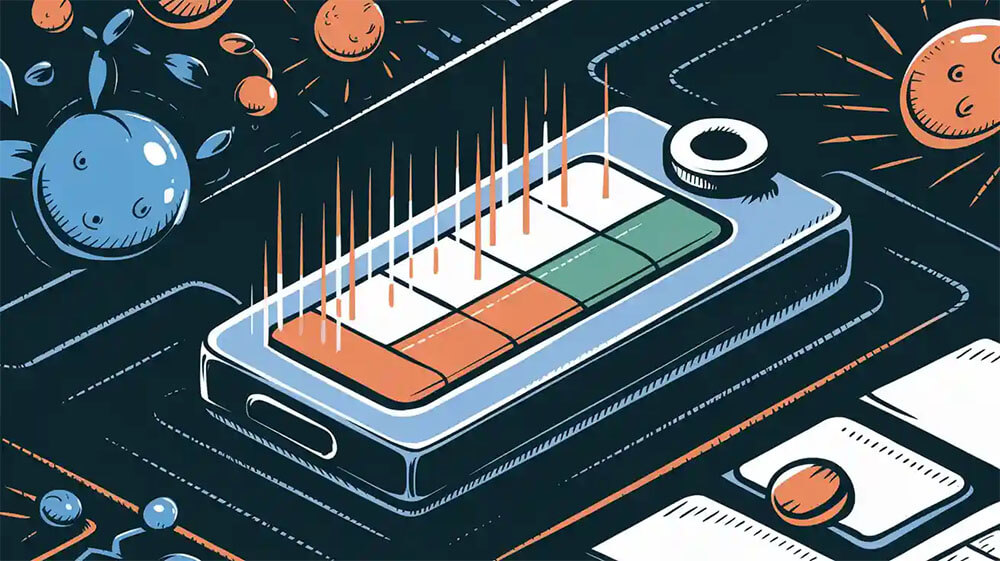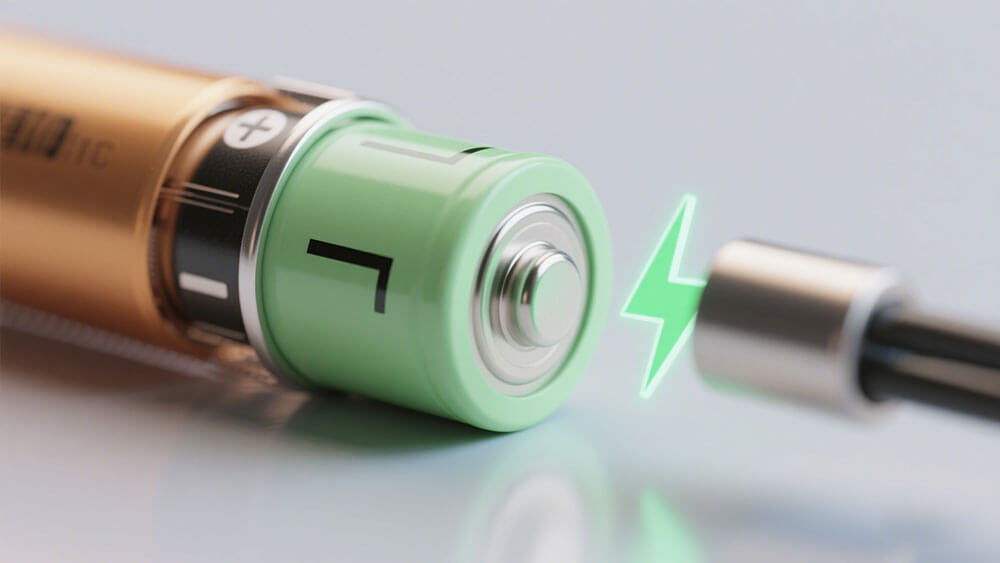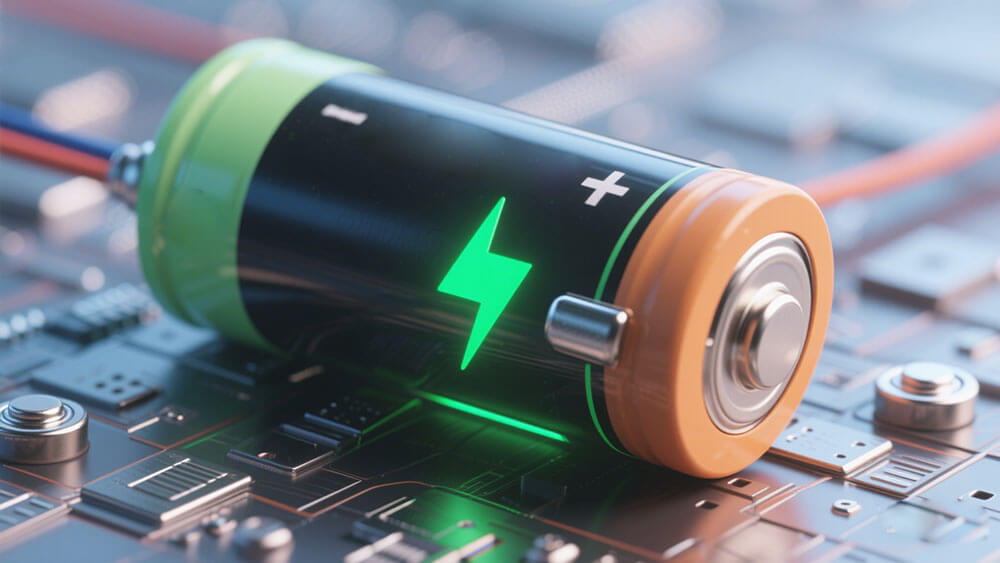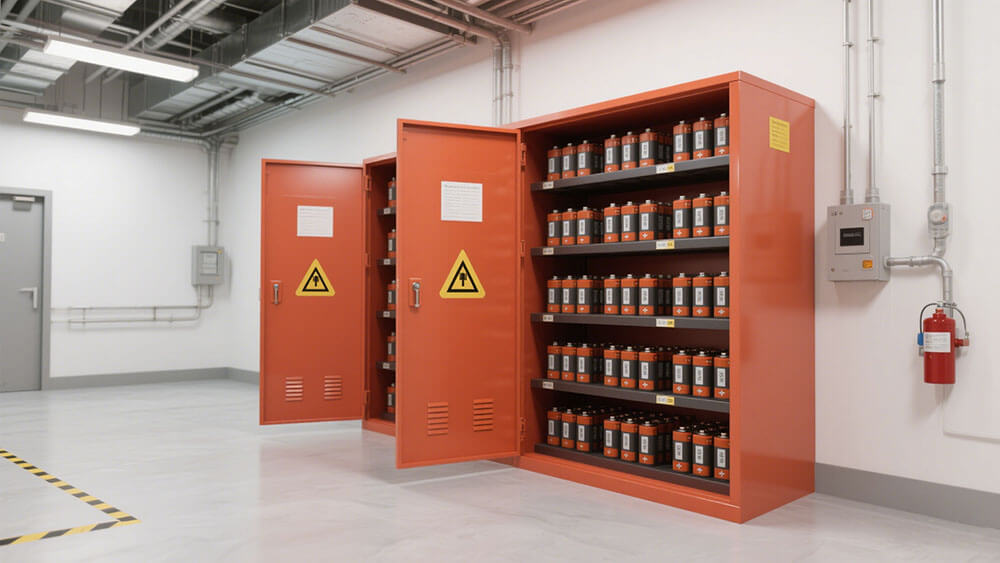Contents

Battery self-discharge refers to the natural loss of charge in a battery over time, even when it is not in use. This phenomenon occurs due to internal chemical reactions and physical factors inherent to the battery’s design. For businesses relying on battery packs, understanding self-discharge is critical. It directly impacts operational efficiency, as different battery chemistries exhibit varying self-discharge rates. For instance:
Lithium-ion: 1-2% per month
Lead-acid: 4-8% per month
Nickel-metal hydride: up to 30% per month
These rates influence battery selection, maintenance schedules, and overall performance. By managing self-discharge effectively, you can optimize battery lifespan and reduce costs.
Key Takeaways
Battery self-discharge means batteries lose power naturally over time.
This happens because of chemical reactions and outside conditions.
Different batteries lose power at different speeds. Lithium-ion batteries are better because they lose only 1-2% each month.
Storing batteries in cool places and keeping them partly charged helps.
These steps can slow self-discharge and make batteries last longer.

Part 1: Why Does Battery Self-Discharge Occur?
1.1 Chemical Reactions and Internal Factors
Battery self-discharge primarily results from internal chemical reactions. These reactions occur even when the battery is not in use, leading to energy loss. For instance, in lithium-ion batteries, electrons may take unintended paths, moving directly from the negative to the positive terminal. This phenomenon is a key contributor to self-discharge mechanisms.
Several factors influence these reactions:
Electrochemical Stability: Deviations from ideal conditions can cause energy loss as heat.
Material Degradation: Over time, internal materials degrade, initiating side reactions that consume stored energy.
Ion Transport Efficiency: Inefficiencies in ion movement within the electrolyte increase self-discharge rates.
The quality of the battery’s internal components also plays a significant role. Impurities in the electrolyte or electrode materials can trigger unwanted reactions, accelerating self-discharge. Additionally, the separator’s condition, which isolates the electrodes, is critical. A damaged or low-quality separator can lead to internal short circuits, further increasing self-discharge.
1.2 Environmental Influences on Self-Discharge
Environmental factors significantly affect self-discharge rates. Temperature, in particular, has a profound impact. Higher temperatures accelerate electrochemical reactions, leading to increased energy loss. Conversely, lower temperatures slow down these reactions, reducing self-discharge. However, extremely low temperatures can impair battery performance.
Temperature Range | Effect on Self-Discharge Rate |
|---|---|
High | Accelerates self-discharge due to increased chemical reactions |
Low | Slows down self-discharge process |
Extremely Low | Can reduce battery performance |
Humidity also plays a role. High humidity levels can degrade the electrolyte, increasing internal resistance and self-discharge rates. Proper storage conditions, such as maintaining moderate temperature and humidity levels, are essential for minimizing self-discharge.
1.3 Self-Discharge of a Lithium-Ion Battery vs. Other Types
Different battery types exhibit varying self-discharge rates. Lithium-ion batteries are known for their low self-discharge rates, typically around 1-2% per month. In contrast, lead-acid batteries, depending on their construction, can lose 4-8% of their charge monthly. Nickel-metal hydride batteries have significantly higher self-discharge rates, often exceeding 30% per month.
Battery Type | Self-Discharge Rate |
|---|---|
Lithium-ion | 1-2% per month |
Lead-acid (AGM/Gel) | About 4% per month |
Lead-acid (Flooded) | Up to 8% per month |
Nickel-metal hydride | Over 30% per month |
Understanding these variations is crucial for selecting the right battery type for your application. Lithium-ion batteries, with their superior performance, are often the preferred choice for industrial applications requiring minimal self-discharge.

Part 2: Impact of Battery Self-Discharge on Performance
2.1 Efficiency Loss and Capacity Reduction
Battery self-discharge directly affects efficiency and capacity. Over time, stored energy diminishes, reducing the battery’s ability to deliver optimal performance. For example, lithium-ion batteries lose about 5% of their charge within the first 24 hours, followed by a steady 1-2% per month. In contrast, lead-acid batteries experience a higher initial loss of 10-15% within 24 hours, then 10-15% monthly. The table below highlights the self-discharge rates across various battery systems:
Battery System | Estimated Self-Discharge |
|---|---|
Primary lithium-metal | 10% in 5 years |
Alkaline | 2–3% per year |
Lead-acid | 10–15% in 24h, then 10-15%/mon |
Lithium-ion | 5% in 24h, then 1–2%/mon |
This gradual energy loss impacts industrial applications, where consistent power delivery is critical. You may notice reduced runtime or capacity, especially in older batteries. Selecting low self-discharge options, such as lithium-ion batteries, can mitigate these issues.
2.2 Effects on Battery Lifespan and Maintenance Costs
Self-discharge accelerates battery aging, shortening its lifespan. Frequent energy loss forces you to recharge batteries more often, which increases wear on internal components. Over time, this leads to higher maintenance costs and more frequent replacements. Studies show that proper storage conditions, such as maintaining moderate temperatures and partial charge levels, can slow self-discharge and preserve battery life. Additionally, charging habits play a significant role. Avoiding overcharging or deep discharges can help maintain battery health.
2.3 Implications for Battery Packs in Industrial Applications
In industrial settings, battery packs power critical equipment and systems. High self-discharge rates can disrupt operations, leading to downtime and inefficiencies. For instance, nickel-metal hydride batteries lose up to 30% of their charge monthly, making them unsuitable for long-term storage. Lithium-ion batteries, with their low self-discharge rates, are ideal for industrial applications requiring reliable performance. Proper monitoring and maintenance of battery packs can further enhance their efficiency and longevity.
Tip: To ensure sustainability and reduce costs, consider adopting low self-discharge battery packs and implementing regular maintenance practices. Learn more about sustainability in battery technology here.

Part 3: Practical Strategies to Minimize Self-Discharge
3.1 Best Practices for Storing Battery Packs
Proper storage plays a vital role in minimizing self-discharge and preserving battery performance. By following industry-recommended practices, you can significantly reduce energy loss during storage. The table below outlines key guidelines:
Best Practice | Description |
|---|---|
Optimal Temperature | Store batteries in cool conditions, avoiding freezing temperatures. |
Moderate Charge | Maintain a partial state of charge (40-50% for lithium-ion batteries). |
Regular Checks | Periodically measure the self-discharge rate to identify potential issues. |
Purity Matters | Ensure the electrolyte remains clean to prevent internal short circuits. |
Active Storage | Cycle batteries through occasional use to maintain charge capacity. |
For lithium-ion batteries, maintaining a moderate charge level is particularly important. Storing them fully charged or completely discharged can accelerate self-discharge and degrade their lifespan. Additionally, keeping battery packs in a cool, dry environment helps maintain their efficiency over time.
3.2 Regular Maintenance and Monitoring for Businesses
Implementing a robust maintenance protocol ensures that your battery packs remain reliable and efficient. Regular monitoring helps you identify and address self-discharge issues before they escalate. Consider the following techniques:
Store batteries at optimal temperatures to reduce self-discharge.
Keep batteries partially charged (40-50%) during storage.
Periodically measure the self-discharge rate to detect abnormalities.
Maintain clean electrolytes to prevent internal short circuits.
Use batteries occasionally to preserve their charge capacity.
Smart batteries equipped with monitoring systems can further streamline this process. These systems provide real-time data on charge levels and self-discharge rates, enabling proactive maintenance. For businesses relying on lithium-ion batteries, such tools are invaluable for minimizing downtime and reducing maintenance costs.
3.3 Selecting Low Self-Discharge Battery Packs
Choosing the right battery type is crucial for minimizing self-discharge. Lithium-ion batteries are an excellent choice due to their low self-discharge rates. They lose only 5% of their charge in the first 24 hours and about 1-2% per month thereafter. In contrast, nickel-metal hydride batteries can lose over 30% of their charge monthly, making them less suitable for long-term storage.
Specially designed nickel-metal hydride batteries with self-discharge rates as low as 0.25% per month are available for specific applications. However, lithium-ion batteries remain the preferred option for most industrial uses due to their superior performance and reliability. By selecting low self-discharge battery packs, you can enhance operational efficiency and reduce the frequency of replacements.
Tip: To ensure sustainability and compliance, consider sourcing batteries from manufacturers that adhere to ethical practices. Learn more about conflict-free minerals in battery production here.
Battery self-discharge, the natural energy loss over time, stems from internal chemical reactions and environmental factors like temperature and humidity. Managing this phenomenon is essential for maintaining battery performance and extending lifespan. You can achieve this by storing batteries in dry environments, ensuring proper sealing, and conducting regular inspections. Adopting these practices minimizes downtime and reduces costs, making them vital for businesses relying on battery packs.
FAQ
What is the ideal storage condition for battery packs to minimize self-discharge?
Store batteries at 15-25°C in a dry, cool environment. Maintain a 40-50% charge level to reduce energy loss and preserve lifespan.
Tip: Contact us for more information about battery storage practices here.
How does self-discharge affect industrial battery packs?
Self-discharge reduces stored energy, leading to shorter runtimes and increased maintenance. Lithium-ion batteries minimize this impact with their low self-discharge rates of 1-2% per month.
Tip: Get the best customized lithium-ion battery solutions for your device here.
Can self-discharge damage batteries permanently?
Yes, excessive self-discharge can cause over-discharge, especially in lithium-ion batteries. This may lead to irreversible damage if the voltage drops below 2.5V.
Note: Regular monitoring prevents over-discharge and extends battery life.





